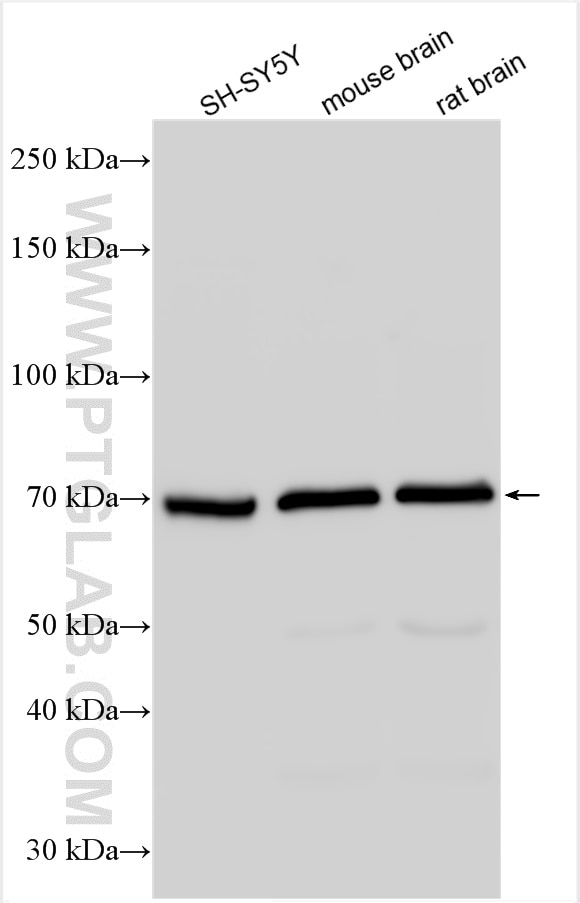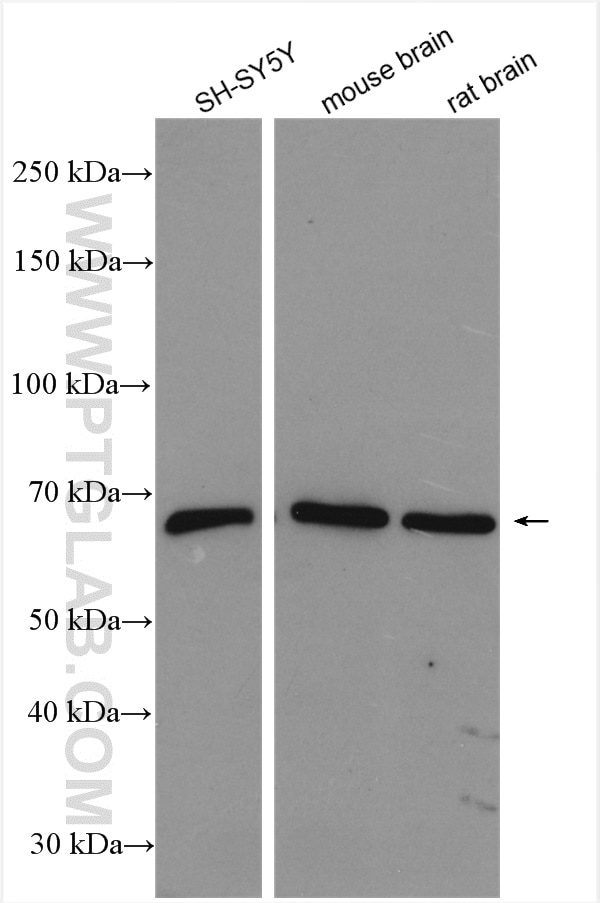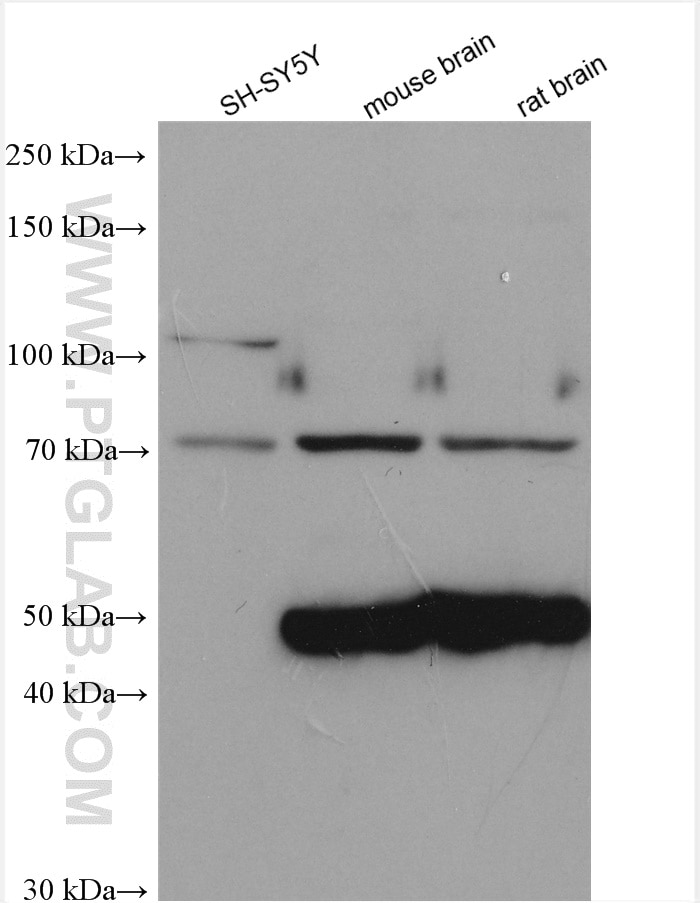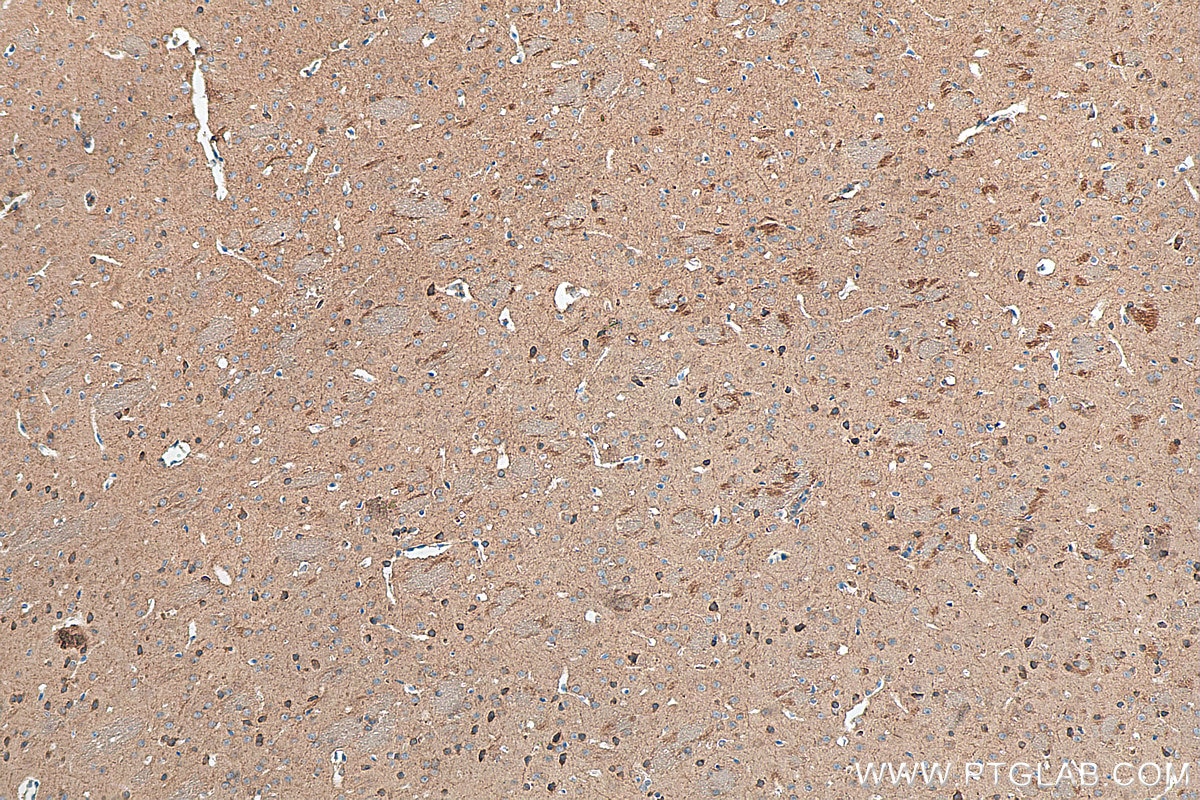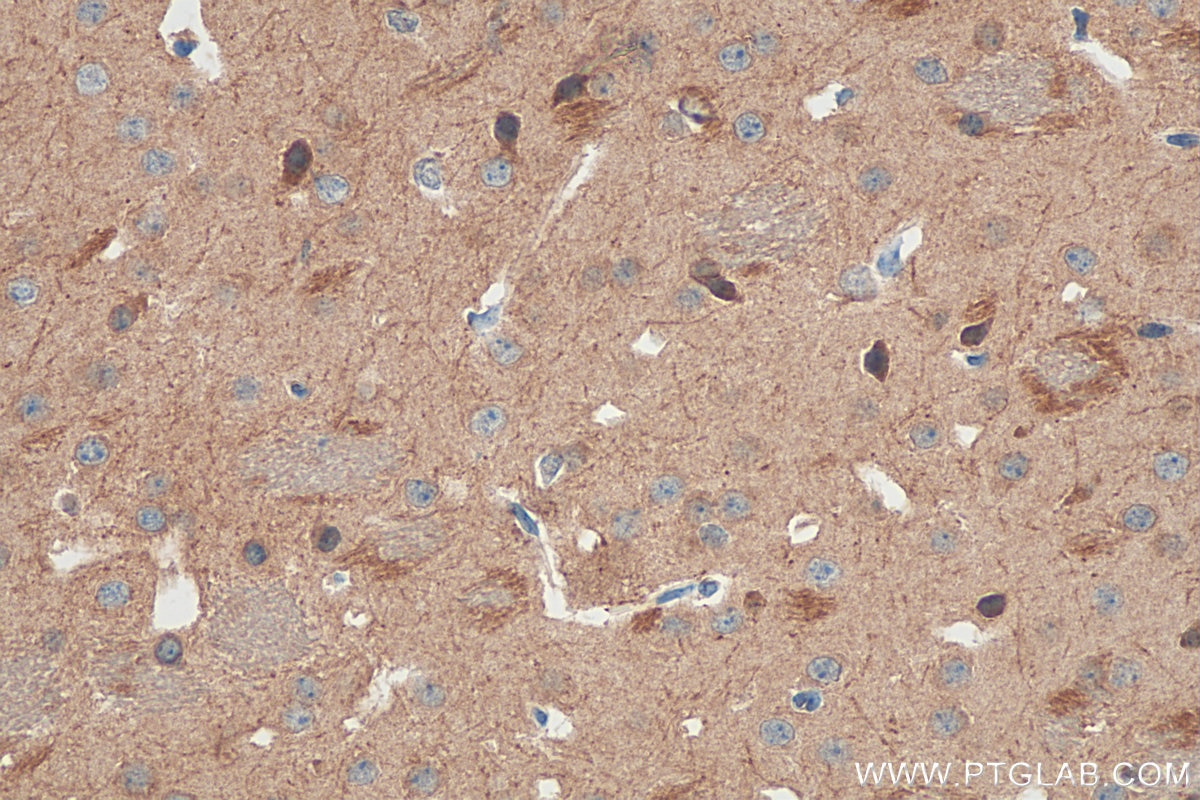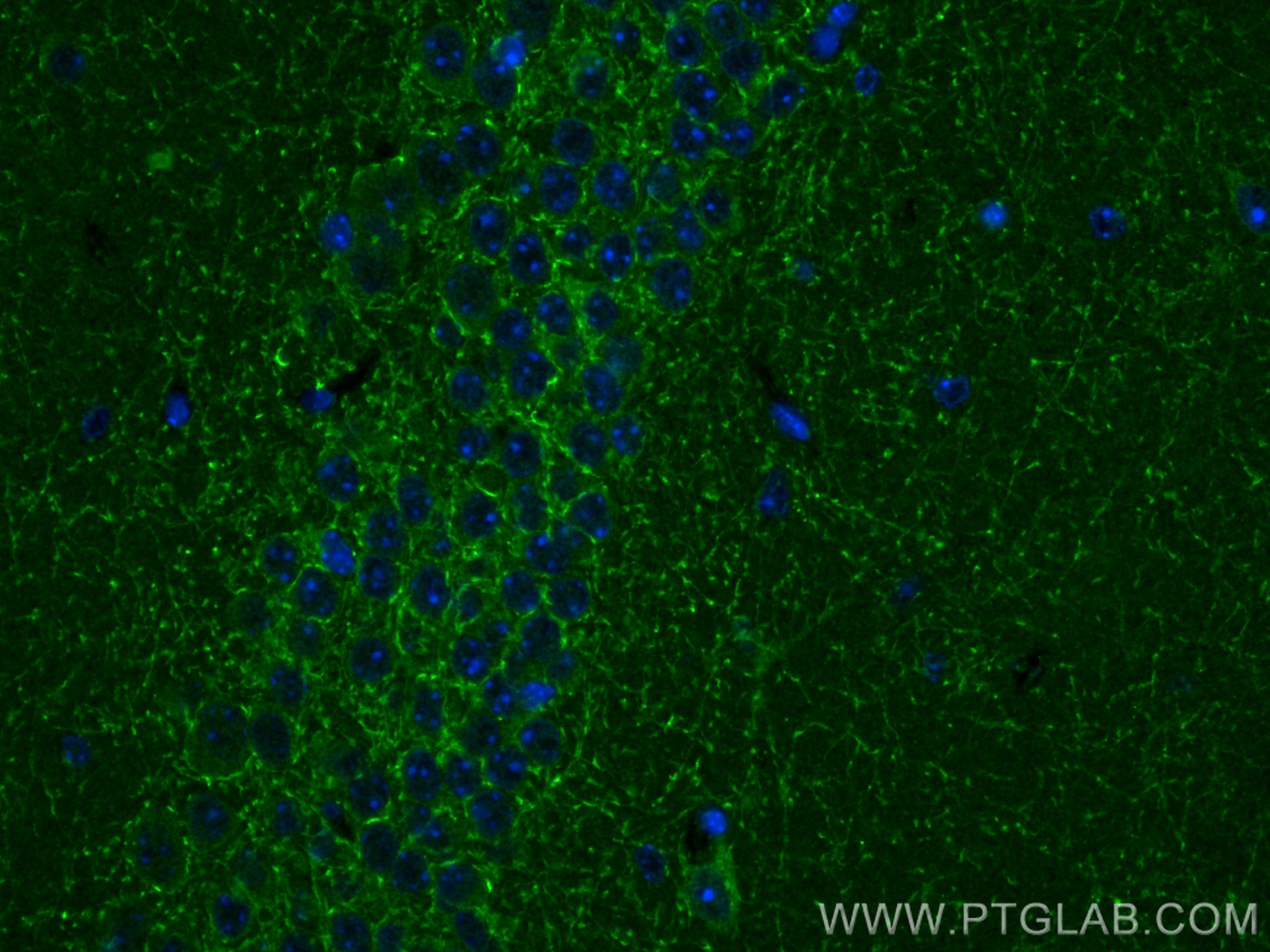Anticorps Polyclonal de lapin anti-Cannabinoid receptor 1
Cannabinoid receptor 1 Polyclonal Antibody for WB, IHC, IF-P, ELISA
Hôte / Isotype
Lapin / IgG
Réactivité testée
Humain, rat, souris
Applications
WB, IHC, IF-P, ELISA
Conjugaison
Non conjugué
N° de cat : 17978-1-AP
Synonymes
Galerie de données de validation
Applications testées
| Résultats positifs en WB | cellules SH-SY5Y, tissu cérébral de rat, tissu cérébral de souris |
| Résultats positifs en IHC | tissu cérébral de souris, il est suggéré de démasquer l'antigène avec un tampon de TE buffer pH 9.0; (*) À défaut, 'le démasquage de l'antigène peut être 'effectué avec un tampon citrate pH 6,0. |
| Résultats positifs en IF-P | tissu cérébral de souris, |
Dilution recommandée
| Application | Dilution |
|---|---|
| Western Blot (WB) | WB : 1:1000-1:4000 |
| Immunohistochimie (IHC) | IHC : 1:200-1:800 |
| Immunofluorescence (IF)-P | IF-P : 1:50-1:500 |
| It is recommended that this reagent should be titrated in each testing system to obtain optimal results. | |
| Sample-dependent, check data in validation data gallery | |
Applications publiées
| WB | See 22 publications below |
| IHC | See 5 publications below |
| IF | See 5 publications below |
Informations sur le produit
17978-1-AP cible Cannabinoid receptor 1 dans les applications de WB, IHC, IF-P, ELISA et montre une réactivité avec des échantillons Humain, rat, souris
| Réactivité | Humain, rat, souris |
| Réactivité citée | rat, Humain, souris |
| Hôte / Isotype | Lapin / IgG |
| Clonalité | Polyclonal |
| Type | Anticorps |
| Immunogène | Cannabinoid receptor 1 Protéine recombinante Ag12371 |
| Nom complet | cannabinoid receptor 1 (brain) |
| Masse moléculaire calculée | 472 aa, 53 kDa |
| Poids moléculaire observé | 45 kDa, 66 kDa |
| Numéro d’acquisition GenBank | BC074812 |
| Symbole du gène | Cannabinoid receptor 1 |
| Identification du gène (NCBI) | 1268 |
| Conjugaison | Non conjugué |
| Forme | Liquide |
| Méthode de purification | Purification par affinité contre l'antigène |
| Tampon de stockage | PBS with 0.02% sodium azide and 50% glycerol |
| Conditions de stockage | Stocker à -20°C. Stable pendant un an après l'expédition. L'aliquotage n'est pas nécessaire pour le stockage à -20oC Les 20ul contiennent 0,1% de BSA. |
Informations générales
Cannabinoid receptor 1 (CNR1, or CB1) and CNR2 (CB2) are members of the guanine-nucleotide-binding protein (G-protein) coupled receptor family. The CB1 receptor is expressed mainly in the brain. The CB2 receptor is expressed mainly in the immune system and in hematopoietic cells. The two receptors have been found to be involved in the cannabinoid-induced CNS effects (including alterations in mood and cognition) experienced by users of marijuana.
Protocole
| Product Specific Protocols | |
|---|---|
| WB protocol for Cannabinoid receptor 1 antibody 17978-1-AP | Download protocol |
| IHC protocol for Cannabinoid receptor 1 antibody 17978-1-AP | Download protocol |
| IF protocol for Cannabinoid receptor 1 antibody 17978-1-AP | Download protocol |
| Standard Protocols | |
|---|---|
| Click here to view our Standard Protocols |
Publications
| Species | Application | Title |
|---|---|---|
Elife p21-activated kinase 1 restricts tonic endocannabinoid signaling in the hippocampus. | ||
Transl Psychiatry Deletion of Fgf14 confers resilience to basal and stress-induced depressive-like behavior and reduces anxiety in mice | ||
Chin Med Electroacupuncture repairs intestinal barrier by upregulating CB1 through gut microbiota in DSS-induced acute colitis | ||
Neuropharmacology Δ9-tetrahydrocannabinol induces blood-brain barrier disruption: Involving the activation of CB1R and oxidative stress | ||
Hum Mol Genet BDNF overexpression prevents cognitive deficit elicited by adolescent cannabis exposure and host susceptibility interaction. | ||
Phytomedicine Endocannabinoid signalling/cannabinoid receptor 2 is involved in icariin-mediated protective effects against bleomycin-induced pulmonary fibrosis. |
